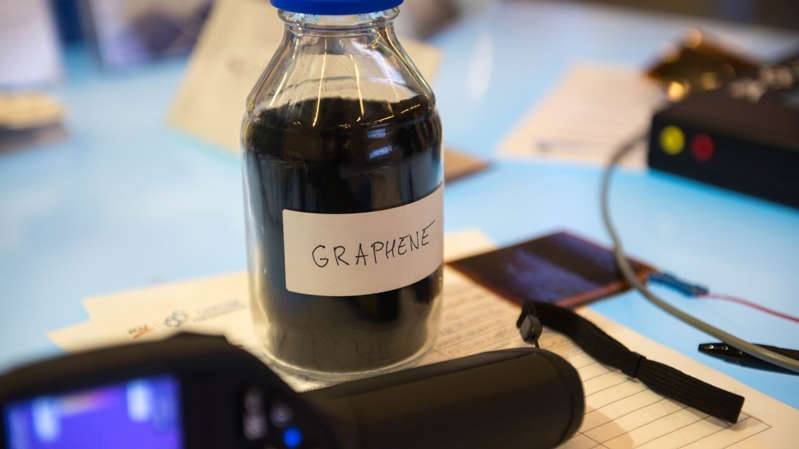
A unique method for the synthesis of multigraphene films at room temperature was created by the research team of NUST MISIS. This will make it possible to apply multigraphene to the surface of low-melting metal powders to create qualitatively new 3D composites. The work was published in the journal Materials Chemistry and Physics.
Graphene additives in materials used in 3D printing improve the mechanical and functional properties of composite products: their thermal conductivity, mechanical strength, and electrical conductivity increase. This is an urgent task when creating complex parts for the aerospace industry using 3D printing methods.
The simplest method for synthesizing graphene is micromechanical exfoliation of graphite, proposed by the 2011 Nobel Prize winners Geim and Novoselov, however, it is inefficient and is mainly used for laboratory research.
One of the ways to obtain graphene electrochemically is its formation from molten salts. However, the synthesis of graphene in this case is carried out at a temperature of 500-700 ° C, which excludes the possibility of its deposition on particles of low-melting metals, such as aluminum, and therefore significantly narrows the range of possible composites modified with graphene.
Scientists from the NUST MISIS Laboratory for Catalysis and Processing of Hydrocarbons solved this problem by developing a new low-temperature technology for producing multigraphene for application on silumin (an alloy based on aluminum and silicon) powders used in the creation of composites by 3D printing.
“Our goal was to produce a significant amount of graphene-silumin powder composite for 3D printing. For this, we carried out the electrochemical deposition of graphene from a weak solution of sulfuric acid with the addition of sucrose. When graphene was deposited on silumin powder, the solution temperature did not exceed 25-30 ° C. Then the obtained composites were subjected to fusion by the SLM method to obtain 3D products, ”said Sergei Eremin, co-author of the study, engineer of the Department of Functional Nanosystems at NUST“ MISiS ”.
According to the developers, the proposed technology makes it possible to regulate the thickness of the deposited graphene layer and maintain its uniform distribution in the powder.
In the future, the development team plans to improve the technology for the synthesis of multigraphene by controlling the thickness of the resulting graphene layers, and also to learn how to obtain continuous graphene films.
The second direction of the technology development is the direct production of graphene powder with a high specific surface area, which will provide an improvement in the sorbing properties for the creation of filter materials. If such powders are modified with silver or copper nanoparticles, a bactericidal effect will be added to the high filtering properties. Filters based on them can be used for water and air purification in industrial and domestic conditions.
Read also:
“In our education system, the transition from school to university is one of the most equipped in the world.”
Scientists have discovered individual aging trajectories
10 world-class RECs have been identified, which will receive almost 128 million rubles each
Researchers have analyzed the impact of climate on lake ecosystems in recent decades
200 million years of life a year lost to humanity as a result of tobacco use

